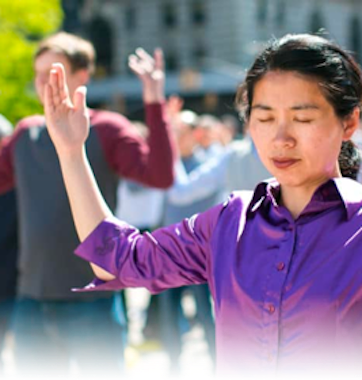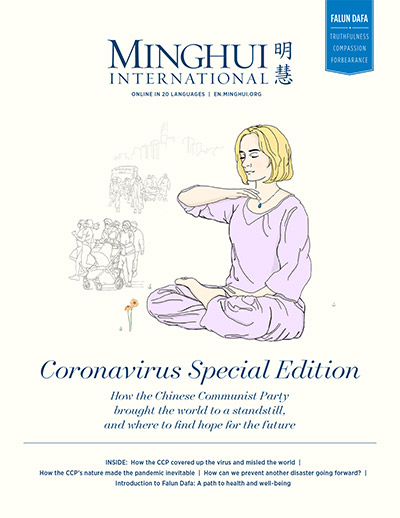(Minghui.org) One reader of Minghui.org said he returned to his hometown in Shandong Province right before the recent Chinese New Year (January 22) and learned from the elders in his family that more than 50 residents in their village had died in 2022.
According to the reader, the majority of the younger generation from the village are working out of town, so many of them were not even aware of the unusually high death toll. In addition to the deaths in 2022, at least another 10 people died in early 2023. The dead, aged 50 to 90, included four relatives of the reader. He said he’d not have known about the deaths had he not gone back to his hometown.
Based on the officially published data in 2018, China has 690,000 countryside villages with an average size of 833 people.Assuming 55 in the reader’s village died in 2022 and another 15 died in January 2023, his village would have a mortality rate of 6.6% (=55/833) in 2022 and a mortality rate of 8.4% (=70/833) in a 13-month period.
This reader was told that the deceased villagers were said to all have some sort of underlying diseases. In addition, some of the deaths happened one after another in a short period of time, with a few days recording two deaths per day. Among the reader’s four relatives mentioned above, one of them had COVID and struggled to breathe. As he was unable to catch his breath one midnight, he died a short while later. Local officials prohibited the family from telling others that he died of COVID. So the family had a small funeral before burying the body. Even relatives or friends were not notified.
“Dare Not Go Out”
Shaoguo, a town of Nong’an County in Jilin Province, has 28,000 residents. It consists of a township center and 14 villages. A Minghui reader said many people had died in Shaoguo, but most residents do not know about this. Located 40 kilometers from Changchun (the capital city of Jilin Province), the town was said to have 80% of its residents infected already. “The clinics were all packed with patients receiving intravenous injections. Many patients took home the IV bottles to do the injections themselves,” wrote the reader.
One woman from Mingjia Community in Changchun said the No.1 Affiliated Hospital of Changchun University of Chinese Medicine near her home was packed with patients. “Lots of people died there every day including Chinese New Year,” she said. “I dare not go out because I’m afraid of catching the sight of coffins.” Videos shared online showed crematories in Changchun were also overburdened and the bodies were often taken to suburban areas for cremation. But most Changchun residents do not know this.
In the countryside in Hubei Province, tents were set up outside houses to mourn the dead, reported a January 27 article by an American think tank, Council on Foreign Relations. The article was titled “COVID Deaths in Rural China.” “On the [45 minute] drive to Yunxi Village, I saw so many mourning tents,” the article cited a resident of Tongcheng, a county in Hubei Province neighboring Hunan and Jiangxi Province. One house in a village nearby on the river lost three family members to COVID. “There is no data, no one knows. We only know that a lot of people ‘hung up’ (died),” added the resident.
Voice of America (VOA) reported on February 3 that the hospitals in China are still overwhelmed by patients. Kevin, an experienced media professional in Guangzhou City, Guangdong Province said many COVID patients could not get medications in hospitals because the medicine had been reserved for those who had “connections.” As a result, many patients had to return home empty-handed.
One of Kevin’s relatives lives in the countryside of Shaoyang City, Hunan Province. The relative tested positive and went to the hospital, but he was told that even cold medicine was no longer available. He argued with the doctor, who eventually prescribed him some medicines. He said to Kevin, “Many people became sick and they just ended up staying at home as if it is a common cold. The doctors said the symptoms will go away after we rest at home for a few days. They said the hospital does not have medicine either and we are on our own.”
More Than 10 Deaths in an Apartment Building in Two Weeks
Liu currently lives in Russia and one of her relatives stayed in Gongzhuling City of Jilin Province for two weeks, during which time over 10 residents in his apartment building complex died. “In just two weeks, over 10 people were carried out like that. So scary!” remarked Liu.
Zhang, a businesswoman in Shijiazhuang City of Hebei Province, told The Epoch Times that one had to pay bribes to crematories to secure cremation bookings because of the long wait time. Large facilities demanded 6,000 yuan [on top of the regular cremation fee] while small ones asked for 4,000 yuan. Because of the high demand for cremation, no funeral service was held anymore. The crematory Zhang went to had three furnaces running 24 hours a day. Burning one body took somewhere between 40 minutes and one hour. The bodies were just placed in the hallway waiting for their turn. “There are 7 or 8 crematories in this area. All of them have a long wait time for cremation,” Zhang continued. “Only those with connections could have their loved ones’ bodies cremated soon; otherwise it would take about one week. Too bad so many people have died and their bodies cannot be cremated right away.”
The Chinese Communist Party (CCP) controls crematories tightly and prohibit them from releasing information about the volume of cremations. The Epoch Times recently obtained a copy of an internal document issued on January 10 by the Comprehensive Team for Joint Prevention and Control Mechanism for COVID-19 under the State Council. With a title of “Notice on promoting work experience and practices in response to COIVD infection in some places,” this document said police and civil affairs department in Jinan City, Shandong Province had dispatched personnel to crematories to be on duty 24 hours a day. Since these measures helped with “maintenance of on-site order, guiding publicity, directing nearby traffic guidance, and reacting to emergencies,” this notice urged other areas to do the same.
Death of CCP Members and Followers
Nanjing Tech University in Jiangsu Province announced 33 obituaries around 2023 Chinese New Year. Ouyang Pingkai, former president and member of Chinese Academy of Engineering, died at 78 on January 30. Shu Fang, another former president, died on January 28. Chen Chong, CCP member and a retiree from the infrastructure office, passed away on January 28. Hua Qing, CCP member and another retiree of the university, died on January 27.
Deaths of some other high-ranking officials were also reported. Lishui Daily in Zhejiang Province reported on January 28 that Wu Shoucheng, Deputy Director of CCP’s Organization Department in Lishui City, died at 57 on January 21. Wu was also Party Secretary and Director of Lishui Human Resources and Social Security Bureau.
Xinhua News Agency reported on February 1 that Chen Qizhi, CCP member and former president of National University of Defense Technology, died in Changsha, Hunan Province on January 15. Huang Hanyuan, chief physician of Peking Union Hospital, died on January 31. Huang became a probationary CCP member in October 2022.
COVID Situation in China’s Prisons
He, a Malaysian citizen released by the Beijing Second Prison on December 20, 2022, told The Epoch Times about the rising COVID cases in prison and cover-up by officials. “At least 10-15% of the inmates have died, a situation similar to some areas outside the prison,” he said.
He was a businessman in Beijing before his prison sentence. He said the prison guards usually worked in shifts, with each shift lasting two to three weeks. When it was time to change shifts again at the end of November 2022, the guards who reported to work brought the virus to the prison. In about 6 days, almost everyone in the prison got infected.
He got infected two days before his scheduled release date of December 11. “But the guards lied to me that it was a common cold,” recalled He. His family had bought him a plane ticket based on his release date, but he wasn’t able to leave the prison. Upon leaving his cell on December 11, he was immediately taken to an armed police’s dorm in the prison because he had COVID. He did not regain freedom until 9 days later.
All content published on this website are copyrighted by Minghui.org. Minghui will produce compilations of its online content regularly and on special occasions.
Category: News & Events










